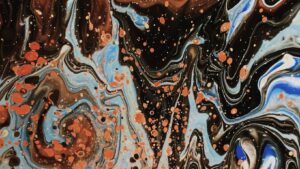Exploring the world of art often leads us down fascinating paths, from the serene beauty of landscapes to the thought-provoking depths of abstract expressions. One such intriguing avenue is non-objective art. When I first encountered this style, I was captivated by its departure from representing recognizable objects or scenes. Instead, non-objective art delves into the realm of pure form, color, and composition, inviting viewers to interpret and connect with the artwork on a visceral level.
In my journey to understand non-objective art, I’ve come to appreciate the freedom it offers both the artist and the audience. By relinquishing the need to depict something tangible, creators can tap into a boundless well of creativity, sparking endless interpretations and emotional responses. As I delve deeper into the nuances of non-objective art, I’m continually amazed by its ability to evoke a sense of wonder and introspection, transcending the confines of traditional representation.
What Is Non-Objective Art
The Definition of Non-Objective Art
Non-objective art, also known as abstract art, is a form of artistic expression that does not attempt to represent objects, people, or scenes from the real world. In non-objective art, the focus is on elements such as color, shape, line, and form, rather than creating a recognizable image. This artistic style relies on the artist’s imagination and creativity to convey emotions and ideas through pure abstraction.
Historical Context and Evolution

Non-objective art emerged in the early 20th century as artists sought to break away from traditional representational art forms. Influenced by movements like Cubism and Futurism, artists began exploring the potential of pure abstraction, paving the way for non-objective art to flourish. Visionaries such as Wassily Kandinsky and Kazimir Malevich played pivotal roles in shaping this artistic movement, pushing boundaries and challenging conventional artistic norms.
Key Characteristics of Non-Objective Art
The essence of non-objective art lies in its freedom from the constraints of reality. Artists working in this style have the liberty to experiment with form, color, and composition without being bound by representational concerns. One of the key characteristics of non-objective art is its ability to evoke emotions and spark imagination without the need for recognizable references. This form of art invites viewers to engage with the artwork on a personal and reflective level, creating a unique and individualized experience for each observer.
Non-Objective Art in the Modern Era
The Presence in Contemporary Art Galleries

In contemporary art galleries, non-objective art, also referred to as abstract art, holds a significant presence. This form of art, which focuses on elements like color, shape, line, and form rather than real-world objects, continues to captivate audiences with its avant-garde approach. Artists exploring non-objective art in modern times push the boundaries of creativity, ushering in unconventional perspectives and pushing the limits of artistic expression. The vivid and evocative nature of non-objective art ensures its enduring popularity in contemporary art galleries around the world.
Impact on Modern Art and Design
The impact of non-objective art on modern art and design is profound. By breaking away from representational constraints, non-objective art has inspired a renaissance of creativity and innovation across various artistic disciplines. In modern art, the influence of non-objective art can be seen in the vibrant compositions, dynamic forms, and experimental techniques adopted by contemporary artists. Moreover, in design, the principles of non-objective art, such as the emphasis on abstract concepts and the use of geometric shapes and patterns, have shaped architectural, graphic, and product design practices.
Non-objective art, with its focus on color, shape, and form, continues to be a powerful form of artistic expression. From its origins in the early 20th century to its impact on contemporary art and design, non-objective art remains a significant force in the creative world. By encouraging creative exploration and individuality, it allows artists and students alike to communicate in unique and meaningful ways. As a timeless and innovative art form, non-objective art will undoubtedly continue to inspire and captivate audiences for years to come.
